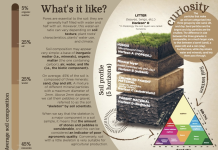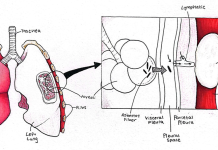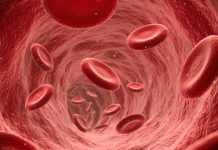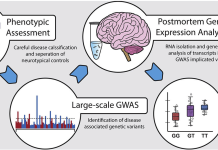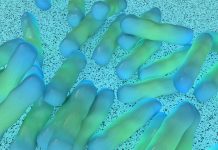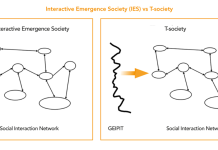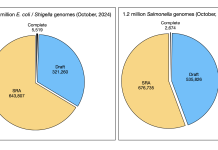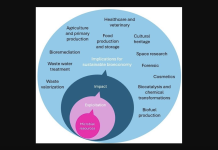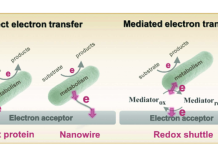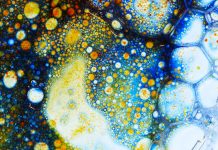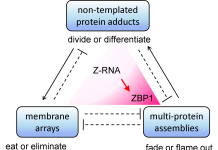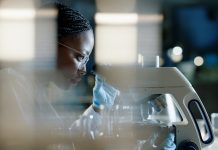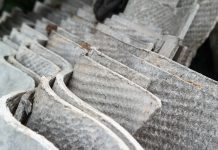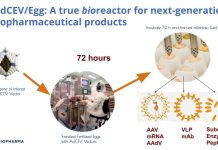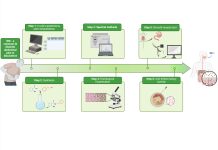Open Access Government produces compelling and informative news, publications, eBooks, and academic research articles for the public and private sector looking at health, diseases & conditions, workplace, research & innovation, digital transformation, government policy, environment, agriculture, energy, transport and more.
Home 2024
Archives
An ancient therapy modernized for Clostridioides Difficile therapy
Clostridioides difficile is a type of bacteria that often affects people who have been taking antibiotics. Glenn S. Tillotson of GST Micro LLC explains how live biotherapeutic products have shown promise as a safe and effective treatment to help restore the normal gut microbiome.
Is there an elephant in the room of research on the origins of life?
Helen Greenwood Hansma, from the University of California at Santa Barbara, questions if there is an elephant in the room of research when it comes to the origins of life.
Training and citizen engagement to tackle soil health challenges
The ECHO project approach in tackling soil health challenges through soil literacy and citizen engagement.
Asbestos, the pleural cavity, and autoimmune disease
Jean C. Pfau, Ph.D. from the Center for Asbestos-Related Disease and Kinta Serve from Idaho State University, provide their perspective on asbestos, the pleural cavity, and autoimmune disease.
Ciliary biomarkers for vascular health
Ramani Ramchandran, Professor at the Medical College of Wisconsin, investigates ciliary biomarkers for diagnosing and prognosing vascular health.
Data integration: A key to understanding the biological basis of mental disorders
ses two key advancements in genome-wide association studies (GWAS) and gene expression data to better understand the biological basis of mental disorders.
Membrane biogenesis, nutrient transport, and natural health product characterization
Find out here about Dr. Bakovic, an internationally recognized researcher in membrane biogenesis, nutrient transport, and natural health product characterization.
Understanding T-societies: How patterns shape our lives
Emeritus Professor Magnus S Magnusson explores the unique sudden bio-mathematical self-similarity between human and protein societies and the human explosion: from T-patterns to T-strings and T-societies.
E. coli genomes, big data, and messy biology
Here, David Ussery from the Department of BioMedical Informatics, UAMS, details E. coli genome diversity, big data, and messy biology. New methods, we discover, allow for the comparison of millions of bacterial genomes in a few days and the confident assignment of taxonomic clusters.
SUS-MIRRI.IT: How microbial culture collections hold up a more sustainable, competitive, and resilient bioeconomy
Marino Moretti and Giovanna Cristina Varese, Project Manager and Scientific Coordinator, respectively, of the EU-funded project SUS-MIRRI.IT, on behalf of all project partners, explain how safeguarding microbial biodiversity is extremely paramount for the future of our planet.
Microbial extracellular electron transfer in the human gastrointestinal tract
Gratian Ting and Arpita Bose from Washington University in St. Louis discuss the fascinating role that extracellular electron transfer plays within the human gut.
Mechanical energy at the origins of life
Did mechanical energy power life’s origins before chemical energy such as ATP was available?
Modelling biodiversity is an essential part of its protection
Professor Guillaume Blanchet from Université de Sherbrooke considers why modelling biodiversity is an essential part of protection and how we can model biodiversity better.
Cellular scaffolding: Crowdsourcing cellular responses in health and disease
In this article, Dr Alan Herbert discusses how different types of cellular scaffolds interact and impact the risk of diseases, citing the example of Z-RNAs pushing cells to inflammatory states in tumors and autoimmune conditions, setting the stage for new therapeutics.
The vital role of sustainable chemistry
Prof. Dr. Cecilia Van Cauwenberghe, PhD, MSc, BS, MBA, Research Director at Everest Group, sheds light on sustainable chemistry, including how breakthrough innovations drive global change.
A century of NAD+ insights drives aging science and solutions innovations
Dr. Rebecca Crews from Renue By Science, LLC, outlines a century of NAD+ insights driving aging science and, innovative solutions and much more.
Timely diagnosis and intervention for people with dementia
Jockey Club Centre for Positive Ageing experts highlight the importance of timely diagnosis and intervention for people with dementia.
Asbestos disease pathogenesis: The long and short of it
Jean Pfau and Kinta Serve explore a critical and novel hypothesis concerning the size of fibers in asbestos disease pathogenesis.
Catalysing vaccines and biologics manufacturing in Africa
Professor Faith Osier, Director of the Chanjo Hub at Imperial College London, shares her vision for vaccines and biologics manufacturing in Africa to secure lives and livelihoods and drive economic growth.
Harnessing hybrid molecules for drug development
Stoyanka Nikolova, Professor from Paisii Hilendarski Plovdiv University, discusses the potential of harnessing hybrid molecules for drug development and their possible application in addressing the clinical challenge of irritable bowel syndrome.

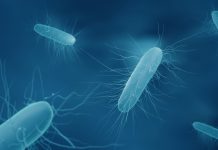
![Is there an elephant in the room of research on the origins of life? Figure 1: Ratios of the concentrations of Sodium ions [Na+] and Potassium ions [K+] in water on land and in the sea vs in living cells and in blood.](https://www.openaccessgovernment.org/wp-content/uploads/2024/12/Fig-1-218x150.png)
